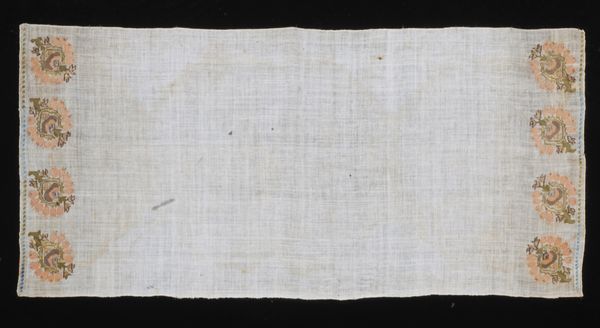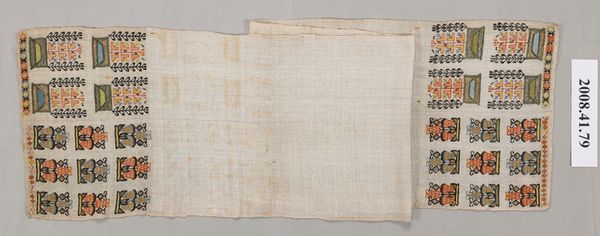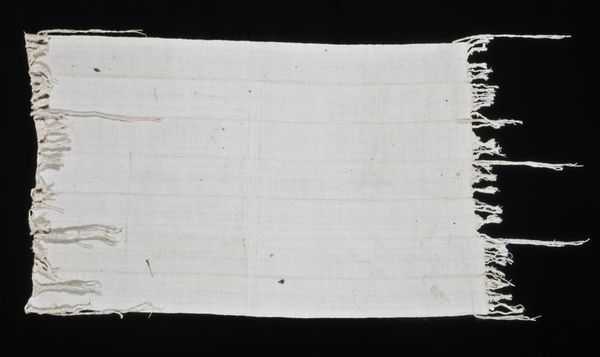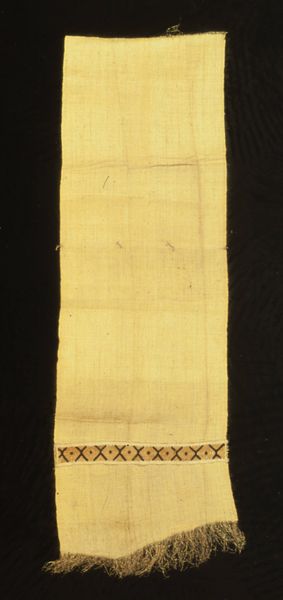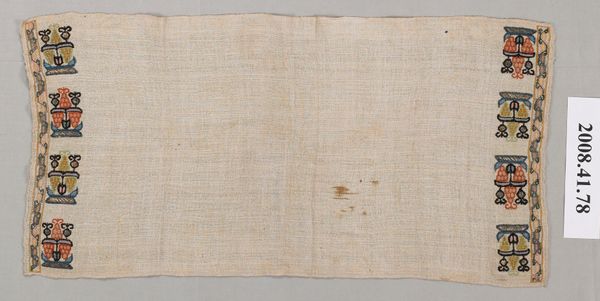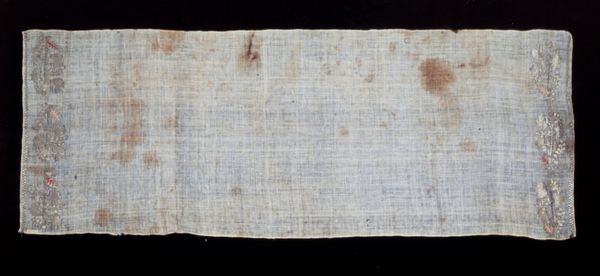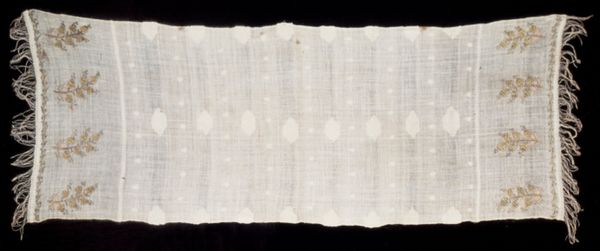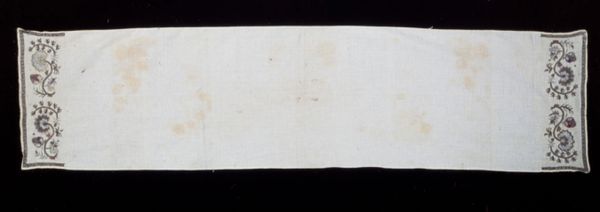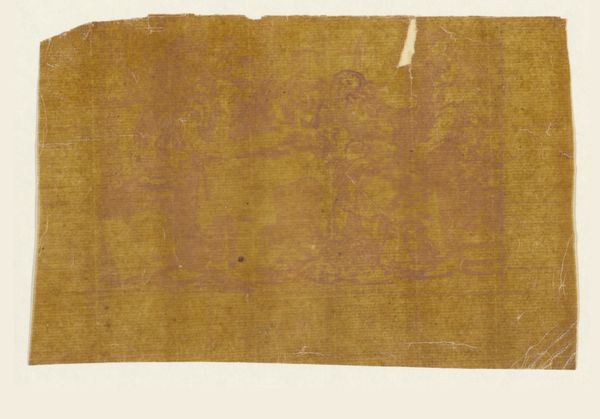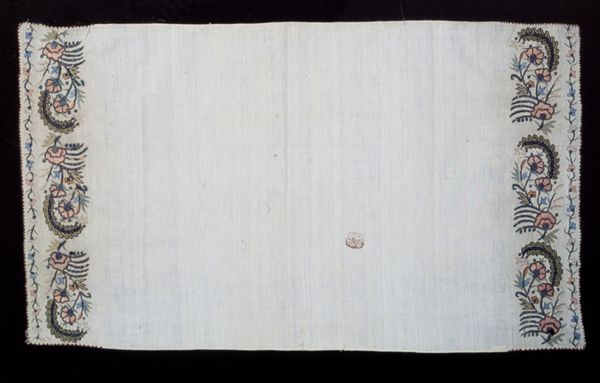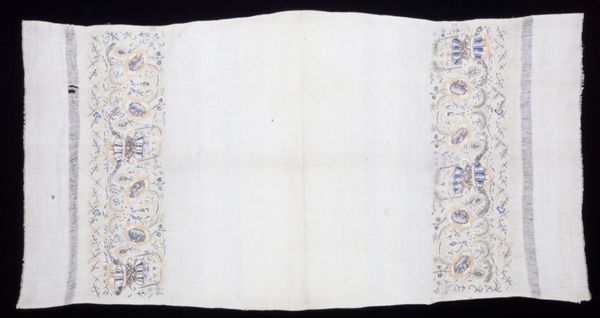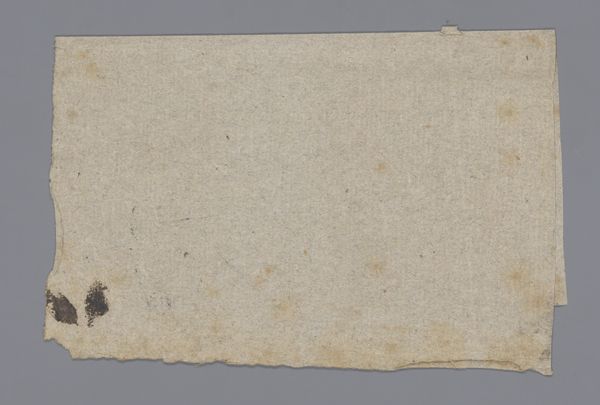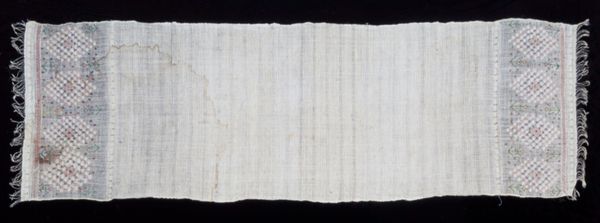
fibre-art, textile, cotton
#
african-art
#
fibre-art
#
textile
#
geometric
#
cotton
Dimensions: 47 x 68 in. (119.4 x 172.7 cm) (including fringe)
Copyright: Public Domain
Editor: So, this is a Woman’s dress, an Afaggou textile piece, from around the 20th century, made by an Ihahan Amazigh artist. It's a geometric cotton piece. The dress is mainly white, adorned with geometric shapes near both edges of the work. Overall, it strikes me as simple and elegant. What story do you think this work tells? Curator: A lovely start! For me, it whispers of a quiet strength, a deeply rooted connection to tradition, yet unafraid of subtle embellishment. These aren’t just geometric forms; they could be glyphs, a coded language passed down through generations. The Berber people are fiercely independent, and their art often carries a symbolism only they fully understand. Imagine the artisan, perhaps in a sun-drenched village, meticulously weaving these patterns – each stitch imbued with meaning, history, a life lived. Doesn’t it feel…personal? Editor: Absolutely, I hadn't thought of it as a form of coded communication. Do you see specific influences or connections to other art forms in the design? Curator: That’s a keen question! While distinctly Berber, there’s an echo of ancient weaving traditions found across North Africa, and even whispers of the abstract tendencies we see blossoming in the early 20th-century avant-garde. The clean lines, the reduction to essential forms...it’s incredibly modern in its own way. It almost vibrates with cultural memory. What feelings emerge when you observe the… austerity? Editor: It's true; there is this surprising minimalist aesthetic at work that is somehow really bold. Now I find this dress even more striking! Curator: Exactly! It's a window into a rich cultural history and a testament to the enduring power of simple forms to communicate complex ideas. What a thought!
Comments
No comments
Be the first to comment and join the conversation on the ultimate creative platform.
